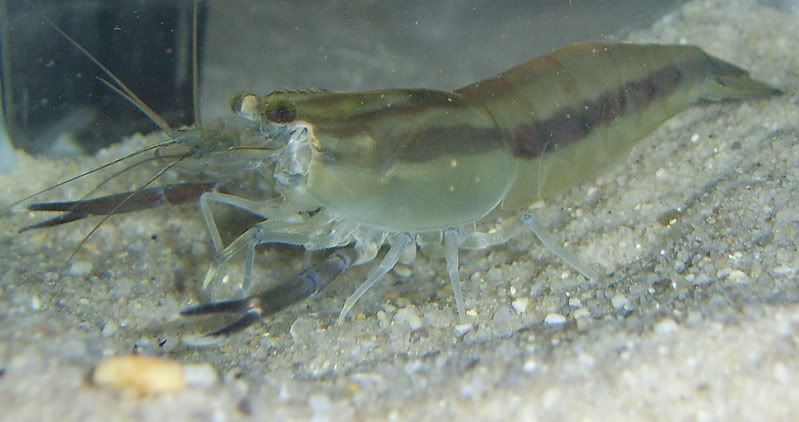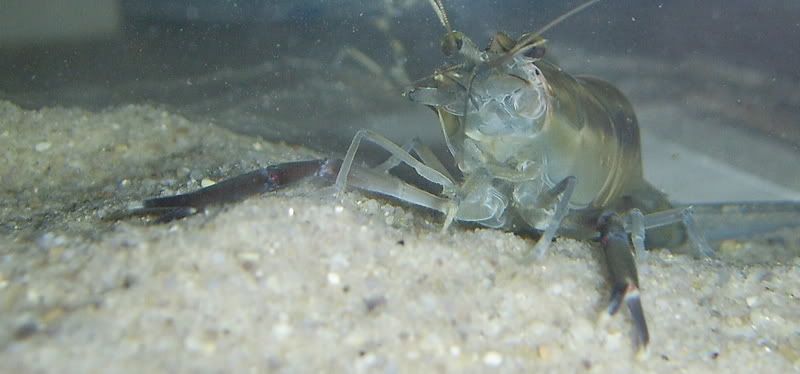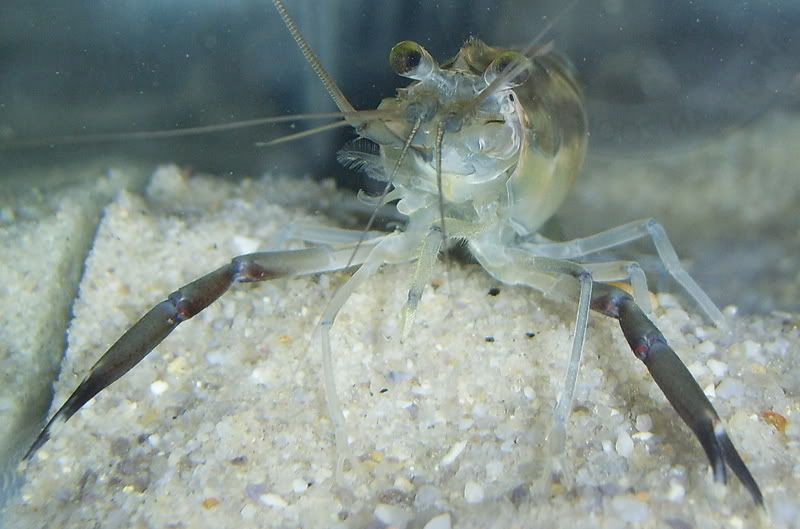Several months ago (before I fully appreciated this species' uncanny ability to master aquarium dividers), I discovered one of my largest Macrobrachium carcinus in the process of consuming a conspecific. Within the space of what was probably just a few minutes, the victim had lost all of its pereiopods, an antennal spine, much of its rostrum, and the forward fringe of its cephalothorax.
Hoping for the best, I immediately isolated it in a 10-gallon tank. Even in this grublike state, the shrimp was able to flutter clumsily forward; thankfully, neither gill tissue nor eyes had been scathed. Though the pearly gray of its wounds acquired black edges of necrotic tissue, the recovering patient remained as voracious as ever, first clutching food placed directly beneath its mandibles and later scooting about with its pleopods to secure sinking pellets.
Within three weeks, limb buds made their appearance. Shortly afterwards, the shrimp underwent its first regenerative molt.
Premolt (note limb regrowth):
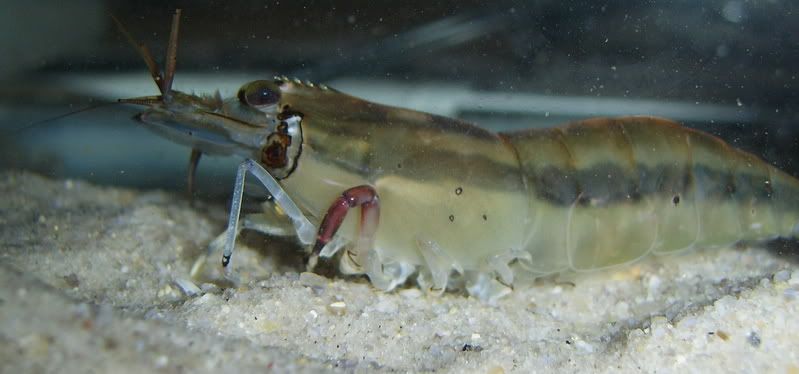
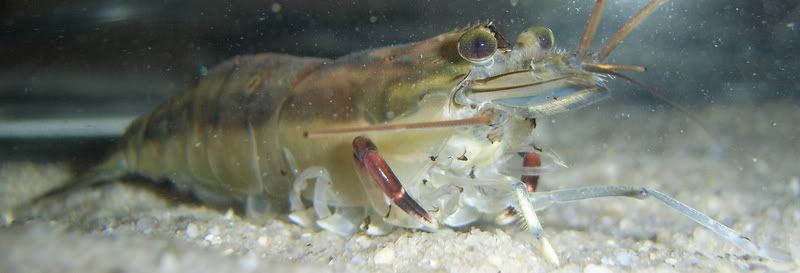

Postmolt:
